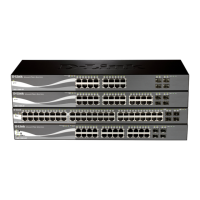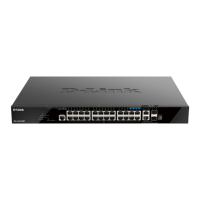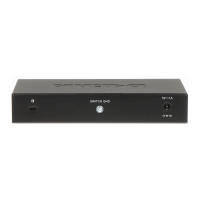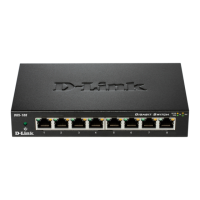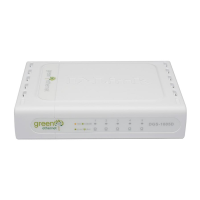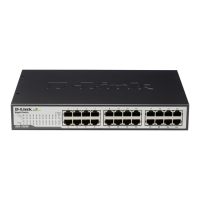DGS-1510 Series Gigabit Ethernet SmartPro Switch CLI Reference Guide
693
Appendix B - Trap Entries
The following table lists all possible trap log entries and their corresponding meanings that will appear
in the switch.
802.1X
The trap is sent when a host has successfully logged
in (passed 802.1X authentication).
Binding objects:
(1) ifIndex
(2) dnaSessionClientMacAddress
(3) dnaSessionAuthVlan
(4) dnaSessionAuthUserName
1.3.6.1.4.1.17
1.14.30.0.1
The trap is sent when a host failed to pass 802.1X
authentication (login failed).
Binding objects:
(1) ifIndex
(2) dnaSessionClientMacAddress
(3) dnaSessionAuthVlan
(4) dnaSessionAuthUserName
(5) dDot1xExtNotifyFailReason
1.3.6.1.4.1.17
1.14.30.0.2
An authenticationFailure trap signifies that the
SNMPv2 entity, acting in an agent role, has received
a protocol message that is not properly
authenticated. While all implementations of the
SNMPv2 must be capable of generating this trap, the
snmpEnableAuthenTraps object indicates whether
this trap will be generated.
dBpduProtectionAttackOccur
This trap is sent when the BPDU attack happened on
an interface.
Binding objects:
(1) ifIndex
(2) dBpduProtectionIfCfgMode
1.3.6.1.4.1.17
1.14.47.0.1
dBpduProtectionAttackRecover
This trap is sent when the BPDU attack recovered on
an interface.
Binding objects:
(1) ifIndex
1.3.6.1.4.1.17
1.14.47.0.2

